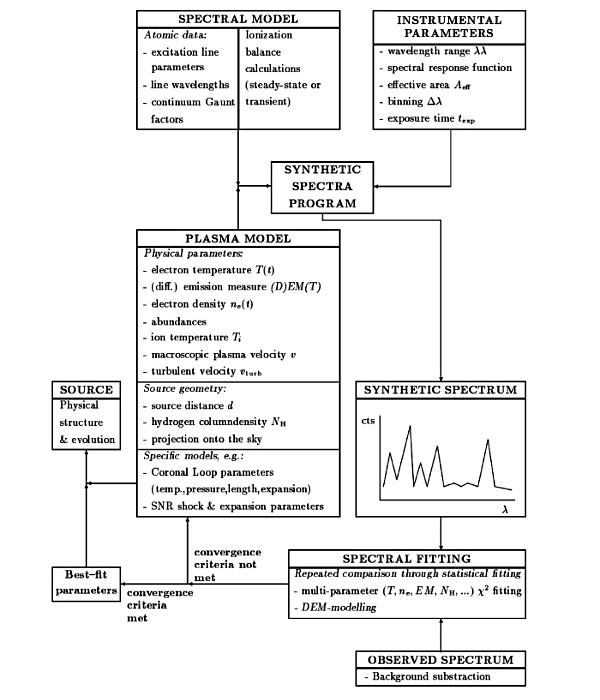8.3.4. Spectral Fitting¶
To infer relevant physical parameters from observed X-ray spectra, physical models are needed. The models need to calculate the expected X-ray spectrum based on physical parameters, like the electron temperature, emission measure and density distributions, ion and elemental abundances, mass motions, and the nature of the ambient radiation field. Unfortunately, the physical models cannot be compared directly to the measured spectra, because the instruments used to obtain the spectra change the spectrum for example by adding background components (instrument noise), change the continuum shape due to the sensitivity of the mirror (effective area), and blur spectral lines due to the instruments spectral resolution.
To take these instrumental components into account, the usual procedure is to apply a forward modelling technique by convolving theoretical model spectra with the instrumental response and to vary the model parameters in order to optimize the fit of the model to the observational data. A common approach is to consider first a simplified plasma model for the X-ray source, neglecting much of the complexity of the temperature and density structure and of the effects of opacity, and to synthesize such models into successively more sophisticated approximations of the source model.

In Figure 1 we give in a processing flow diagram schematically the process of spectral modelling for the case of optically thin coronal plasmas. The synthetic spectra program is fed with input parameters from the spectral model (atomic data for ionization and line and continuum excitation), the instrumental model, and from the assumed plasma model for the source. The synthetic spectra code generates spectra which can be compared to the observations and tested by means of statistical fitting procedures.
